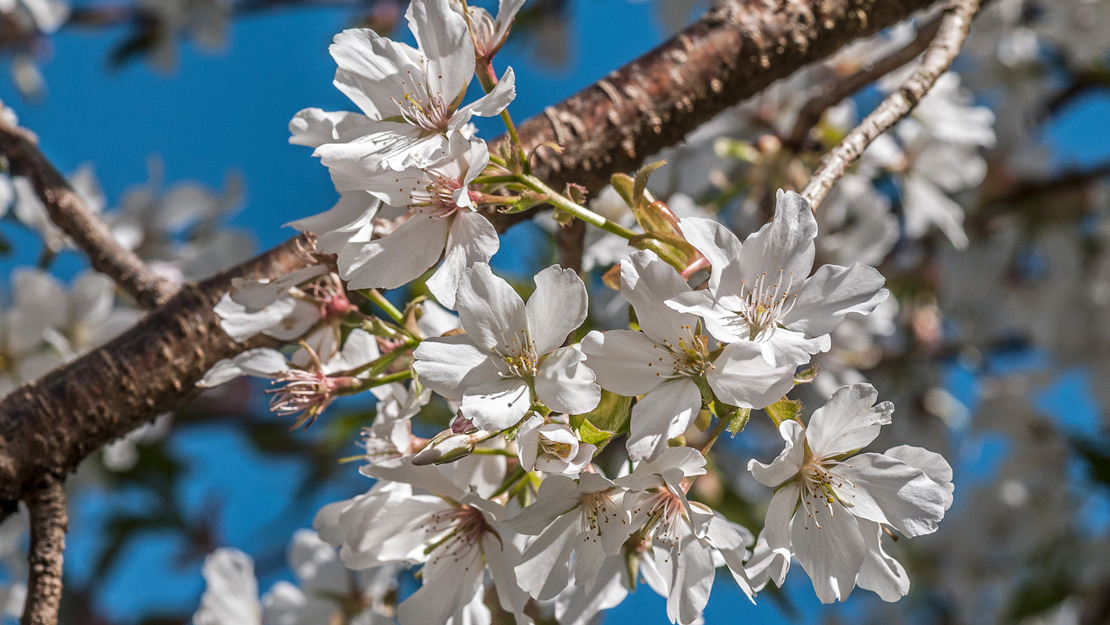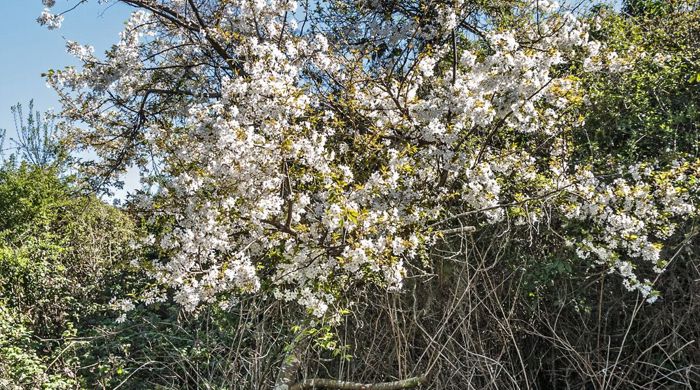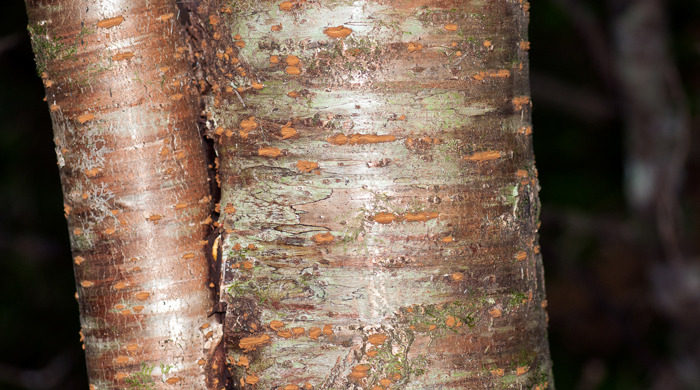Prunus serrulata
Japanese cherry
Family: Rosaceae
Origin: Asia

Regional Pest Management Plan (RPMP) status
- Hauraki Gulf Controlled Area Notice pest
- Whole region — Sustained control
General description
Deciduous tree < 12 m tall. Leaves are < 13 x 6 cm and toothed. Flowers are pink/white and borne in spring. Fruit is red/black and < 15 mm in diameter.
What you need to know
To help protect our environment, from 1 September 2022, you:
- will not be allowed to breed, distribute, release or sell Japanese cherry within the Auckland region. This includes selling within the Auckland region to out-of-region buyers
- low fertility cultivars ‘Shimidsu Sakura’, ‘Kiku Shidare Sakura’ and ‘Kanzan’ are exempt from pest status and you will still be able to sell these. Four additional cultivars, ‘Ukon’, ‘Tai Haku’, ‘Shirotae’ and ‘Amanogawa’ are still undergoing independent fertility testing, and you can still sell these cultivars until 1 September 2025 by which time a determination will be made about whether they pose sufficiently low risk to also be exempted from the ban long term
- will not be allowed to plant Japanese cherry within the Auckland region, unless you are transferring an existing plant on your land to another location within the boundaries of the same property
- must destroy any Japanese cherry on land that you occupy if it has been planted in breach of the above rules and you are directed to do so by an authorised person.
Habitats
Forest, riparian margins, roadsides, track sides, gardens.
Dispersal
Seeds dispersed by birds. Vegetative spread from suckers.
Impact on environment
Competes with and displaces native plants. May reduce plant functional diversity in invaded forests.
Control
Site Management
Follow up treated areas 3 times per year. Encourage natural regeneration of native plants or replant treated areas where possible after 2-3 treatments to establish dense ground cover and minimise reinvasion.
Recommended approaches
Physical control
Method: Dig out.
Plant parts requiring disposal: Seeds.
Disposal options: Remove to greenwaste or landfill if practical.
Biocontrol
Biocontrol is currently not available for this species.
Community agrichemical control recommendations
No qualifications: Cut stump and paste freshly cut base of stems with metsulfuron gel.
Basic Growsafe certified: Cut stump and spray freshly cut base with 1g metsulfuron-methyl per 1 L of water.
Certified Handler/Experienced agrichemical user: Drill and inject trees with 1g metsulfuron-methyl per 1L of water if safe to do so. Drill 18mm holes (tangentially angled downwards) in a spiral up the trunk.
For 50mm stems drill one hole. For 100mm stems drill two holes. For larger stems drill holes 150mm apart. Foliar spray seedlings with 5g metsulfuron-methyl per 10L of water and 20ml penetrant.
Safety notes
Large trees must not be drilled that are closer than 1.5 times the height of the tree from paths, walkways and property.
Trees over 4 metres in height should be treated and then removed by a qualified arborist.
Caution: When using any herbicide or pesticide please read the label thoroughly to ensure that all instructions and safety requirements are followed.





